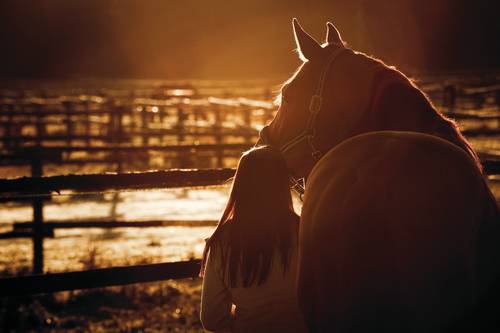
DISEASE INFO
Myxomatosis
Myxomatosis is a severe, often fatal disease of the European rabbit (Oryctolagus) caused by myxoma virus. The virus is well-adapted to certain wild species of rabbits such as the South American cottontail (Sylvilagus) and these species are resistant to severe disease. However in the European rabbit it causes a systemic disease with a high mortality. All other mammals are refractory to the virus. Myxoma virus has been deliberately used in certain countries (e.g. Australia and France) for biological control of wild populations of the European rabbit.
Etiology and Pathogenesis
Myxoma virus is a member of the poxvirus family. It is a large, double-stranded DNA virus which replicates in the cytoplasm of infected cells. Biting insects are an important vector for transmission of myxoma virus. Such transmission is passive; the virus mechanically adheres to the mouthparts of the vector but no replication takes place. However the virus is also able to spread efficiently between rabbits in close contact in the absence of insect vectors. It is shed in ocular and nasal secretions and it is also potentially present in semen and genital secretions.
Following intradermal inoculation, initial replication of virus occurs at the inoculation site and within a few days the virus spreads from here to the draining lymph node. The virus spreads throughout the body via leucocytes to numerous secondary tissues and organs including lymphoid tissue, lungs, testes, conjunctivae, nasal mucosa and distal skin. Myxoma virus possesses a number of immunosuppressive mechanisms which assist viral survival and dissemination in the infected host. This may help explain why severe secondary bacterial infections are commonly seen in infected rabbits. Despite the immunosuppression, infected rabbits will develop an IgM and IgG antibody response with can be detected in the serum by ELISA and neutralization tests as early as days 6–10 after infection and both humoral and cell-mediated immunity is probably important in order to provide optimum resistance to disease. Myxoma virus can persist for prolonged periods in some rabbits and there are suggestions that latent infection may be a feature of the disease leading to later recrudescence of disease and virus shedding.
Clinical and Pathological Findings
Clinical signs depend on the strain of the virus and the route of infection. Two forms of the disease have been decribed; the classical (nodular) form and the amyxomatous (respiratory) form.
Nodular myxomatosis is mainly transmitted by biting insects and predominately observed in wild and pet rabbits. It is characterised by multiple skin lesions and immunosuppression, usually accompanied by secondary bacterial infection of the respiratory tract. The evolution of clinical signs depends on the virulence of the infecting strain. Following infection with more virulent strains the initial sign is a swelling at the site of infection, which increases in size and often ulcerates. Following this, acute inflammation of the conjunctivae and oedematous swelling of the eyelids and genital area occurs and secondary skin lesions usually appear on about the sixth or the seventh day post-infection. Death commonly occurs sometime between days 8 and 15 post-infection. The mortality rate ranges from 20 to 100%, according to the virulence of the infecting strain, and in surviving animals the lesions will progressively heal. Secondary bacterial infections of the upper and lower respiratory tract (e.g with Pasteurellae) are typically seen in rabbits that live longer than around 10-14 days and this is probably the major cause of death in rabbits infected with less virulent strains.
The clinical signs of amyxomatous myxomatosis are mainly respiratory. This form is generally characterised by fewer skin lesions than the nodular type, although many of the other typical clinical signs such as conjunctivitis, swollen eyelids and genital area and rhinitis can be seen. This presentation of the disease form is more commonly seen in commercially farmed rabbits and it has been suggested that the amyxomatous form may represent an adaptation to contact spread via respiratory and conjunctival secretions. The virulence of amyxomatous strains seems to depend more on the presence of secondary bacterial pathogens such as Pasturella multocida.
In peracute cases there may be no gross lesions. In rabbits that survive longer, findings at necropsy may include reduced body fat and haemorrhages in various organs (e.g. thymus, trachea and lungs); subcutaneous ecchymoses; multiple mucinous cutaneous nodules; oedema of the eyelids and anogenital region; swollen conjuctivae with mucopurulent ocular discharge; swollen nasal mucosae and mucopurulent nasal discharge; patchy consolidation in the lungs associated with secondary infections; swollen spleen and enlarged, oedematous and haemorrhagic lymph nodes.
Diagnosis
In many cases the typical clinical signs are sufficiently distinct to serve as the basis for diagnosis. If necessary, diagnosis can be confirmed in an individual case by isolation and identification of the virus or identification of viral antigen from skin lesions or sites of viral shedding (e.g. conjunctivae) and commercial PCR tests are now fairly widely available from a number of laboratories. Serologic tests (mainly ELISA) are also available to detect antibodies to the virus and these can be useful in confirming the overall prevalence of infection
Source: Merck Vet Manual

Canine Cough, or canine infectious tracheobronchitis, is a highly contagious respiratory disease in dogs. Found worldwide, the disease will affect a relatively high percentage of dogs in their lifetime. Learn how you can do your part to protect against Canine Cough and keep bonds strong.
Rabies causes over 55,000 deaths in people each year in Africa and India. Learn how you can help eliminate this deadly disease by protecting your pet with Nobivac vaccines.
Create stronger bonds by educating yourself on the importance of vaccinating your pets. Keep informed about the benefits of vaccination with our helpful animation.
Equine influenza is a highly infectious respiratory disease of horses. Found almost worldwide, the disease will affect a worrying percentage of horses in their lifetime. Learn how you can do your part to protect against Equine influenza and keep the bonds strong.






